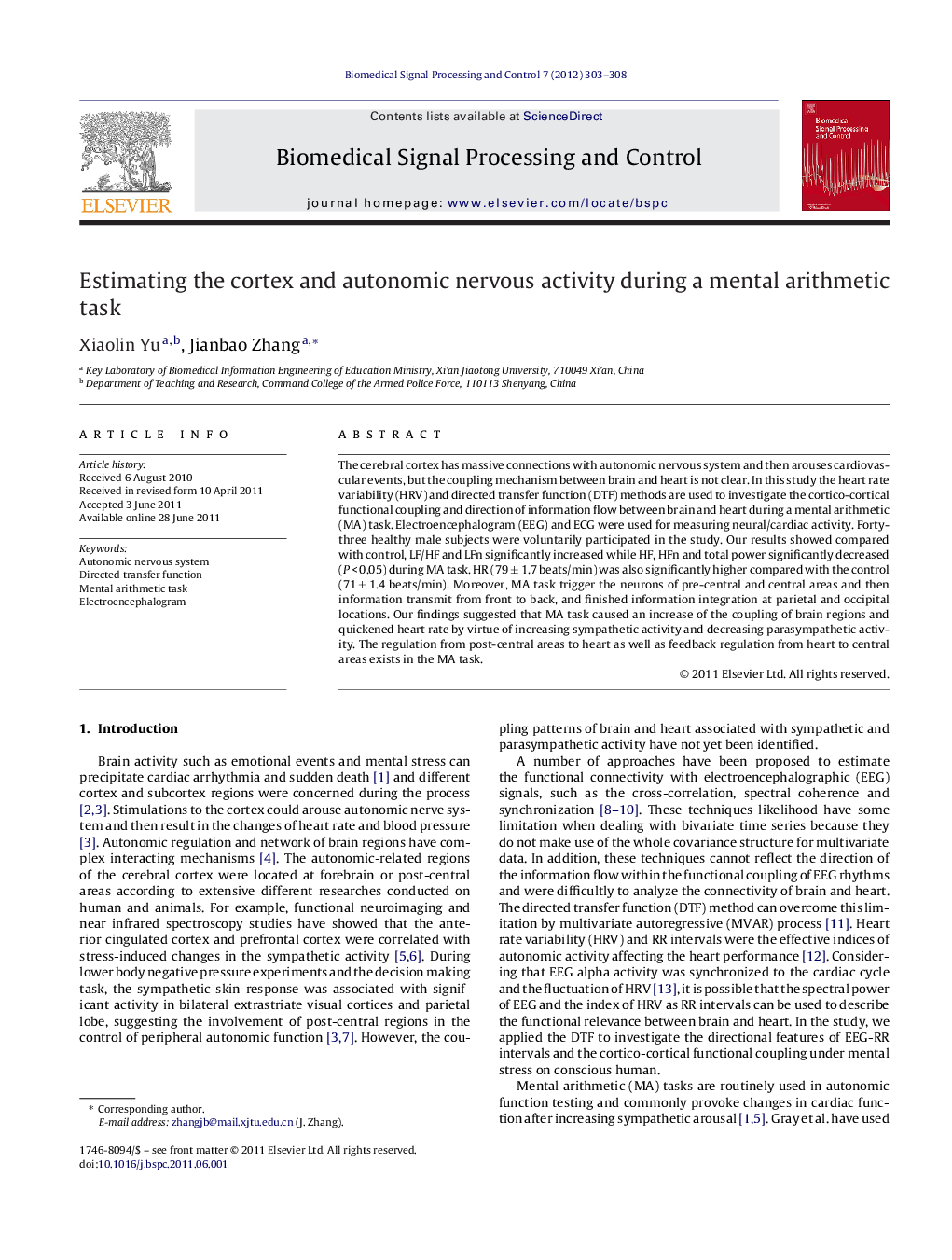| Article ID | Journal | Published Year | Pages | File Type |
|---|---|---|---|---|
| 558921 | Biomedical Signal Processing and Control | 2012 | 6 Pages |
The cerebral cortex has massive connections with autonomic nervous system and then arouses cardiovascular events, but the coupling mechanism between brain and heart is not clear. In this study the heart rate variability (HRV) and directed transfer function (DTF) methods are used to investigate the cortico-cortical functional coupling and direction of information flow between brain and heart during a mental arithmetic (MA) task. Electroencephalogram (EEG) and ECG were used for measuring neural/cardiac activity. Forty-three healthy male subjects were voluntarily participated in the study. Our results showed compared with control, LF/HF and LFn significantly increased while HF, HFn and total power significantly decreased (P < 0.05) during MA task. HR (79 ± 1.7 beats/min) was also significantly higher compared with the control (71 ± 1.4 beats/min). Moreover, MA task trigger the neurons of pre-central and central areas and then information transmit from front to back, and finished information integration at parietal and occipital locations. Our findings suggested that MA task caused an increase of the coupling of brain regions and quickened heart rate by virtue of increasing sympathetic activity and decreasing parasympathetic activity. The regulation from post-central areas to heart as well as feedback regulation from heart to central areas exists in the MA task.
► The heart rate variability (HRV) and directed transfer function (DTF) methods are used. ► The direction of information flow between brain and heart are investigated during a mental arithmetic (MA) task.
